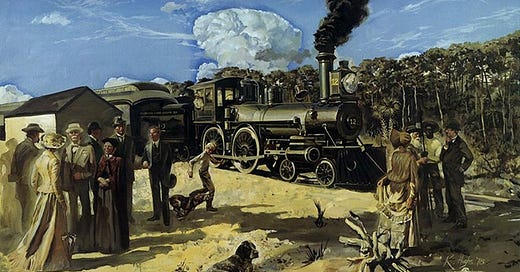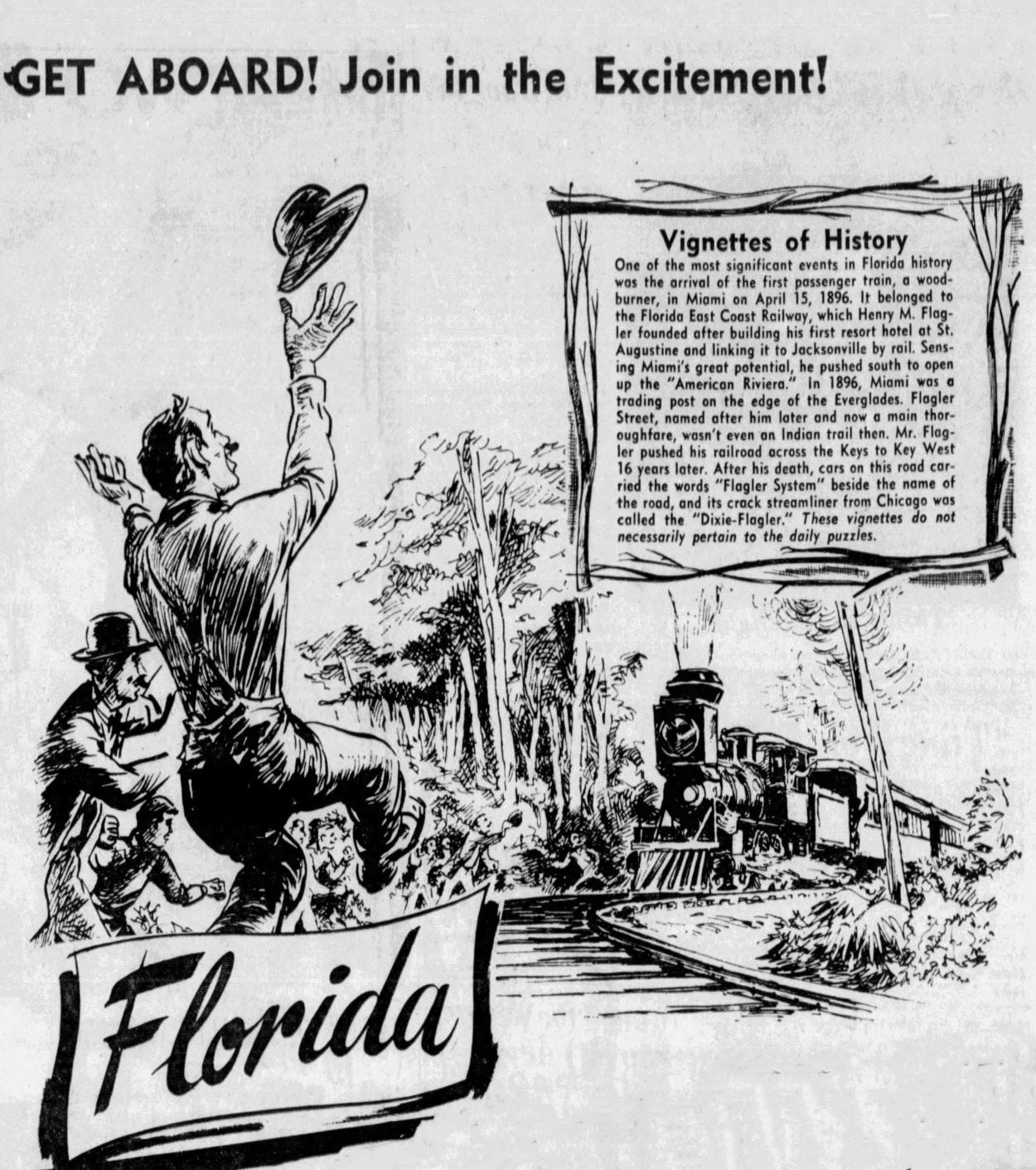First Trains Arrive in Miami in April of 1896
The first train arrives to the banks of the Miami River on April 13, 1896. This was followed by the first passenger service roughly a week later. The city was incorporated on July 28 of 1896.
In many ways, the City of Miami got its start with the completion of the FEC Railway extension in 1896. While there were some very important people and events that triggered the extension, it was the completion of the railway to Miami that initiated the domino effect that triggered the formation of a great southern city. There were freezes and offers of land from property-rich South Florida pioneers, including Julia Tuttle and the Brickell family, that preceded the extension of the railway, but it was Henry Flagler’s agreement and investment to lay track from West Palm Beach to the Miami River that provided the pivotal catalyst for the formation of the Magic City.
Given the importance of the railroad extension to Miami’s origin story, it makes sense that the arrival of the first train would be a seminal event in the city’s history. This milestone is often cited and commemorated in any list of important dates associated with Miami. It has long been believed that the train to make the first journey to Miami arrived on Wednesday, April 15, 1896. While it is true that the first scheduled train arrived on that date, there is evidence to confirm that there was an unofficial train that arrived two days earlier, on Monday, April 13, 1896.
Early Accounts of the First Train
As far back as one can search for information about the first train to arrive in Miami, they will find the date cited for the arrival as April 15, 1896. The Miami Metropolis, the forerunner of the Miami News, had consistently published that the first train arrived on Wednesday, April 15, 1896. However, the Miami Metropolis was not established and did not print their first edition until mid-May of 1896. The city’s first newspaper did not report on the arrival of the first train firsthand, and therefore, relied on the account of pioneers who shared their memories of the event.
There are plenty of notable pioneers who were interviewed or published their biographical accounts in memoirs they wrote later in life. Isidor Cohen, in his book ‘Historical Sketches and Sidelights of Miami, Florida’, remembers the excitement of the arrival of the first train and how a crowd of 300 people gathered to greet the incoming train. He also recalled seeing Henry Flagler and several other FEC dignitaries that joined Flagler on that trip. However, Cohen didn’t specify the exact date of this event and referred to it as occurring in the “last part of April” in his memoir.
J.K. Dorn, J.N. Lummus, Herbert Rogers, as well as others who relocated to Miami prior to the arrival of the first train, also shared their memories of early Miami and many recalled that the first train to Miami arrived on April 15th. It is the memories of many of these early pioneers who arrived before the train that provide us with the date of one of Miami’s most important milestones. However, given the amount of time that had passed when they wrote their biographies, some of the details were inconsistent with other sources.
Oral history is important and is often the only source of what happened and when it happened as historians try to piece together the early history of settlements prior to the establishment of a newspaper or other publications. Given Florida East Coast Railway records and the accounts of early pioneers, there was clearly a train that arrived in Miami on Wednesday, April 15, 1896, but was it the very first?
Keep reading with a 7-day free trial
Subscribe to Miami History to keep reading this post and get 7 days of free access to the full post archives.






